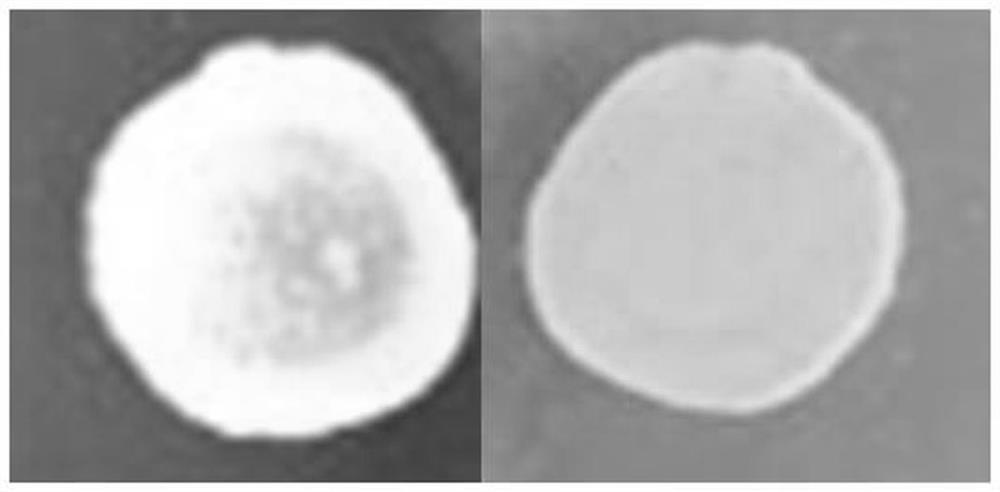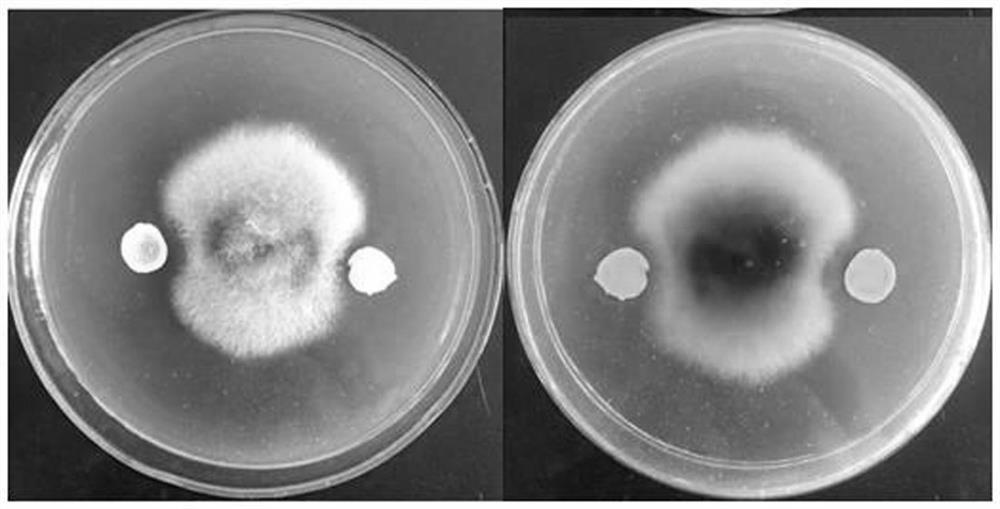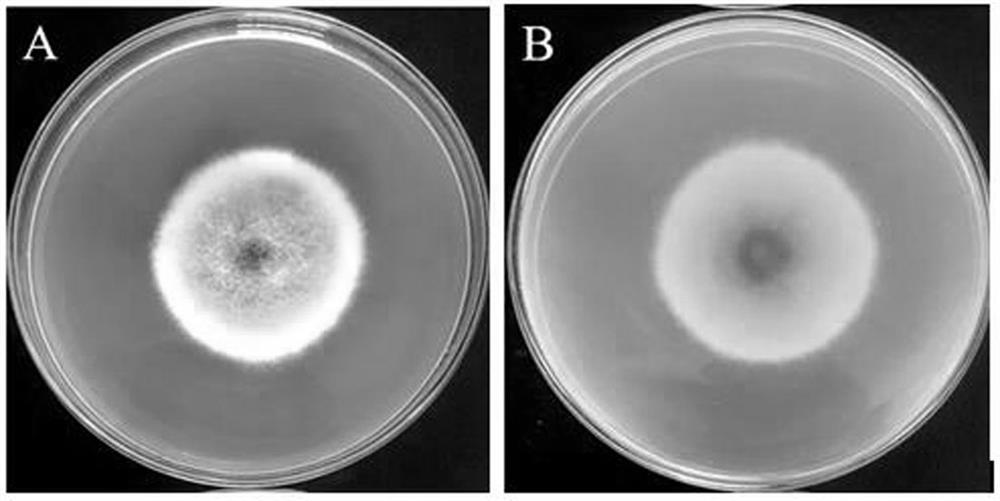Streptomyces castanea strain CPAT-W03 and application thereof
A technology of CPAT-W03, Streptomyces chestnutum, applied in the application, bacteria, fungicides, etc., can solve the problems of poor growth, death of the whole plant, economic loss, etc. Short, easy-to-get effects
- Summary
- Abstract
- Description
- Claims
- Application Information
AI Technical Summary
Problems solved by technology
Method used
Image
Examples
Embodiment 1
[0043] Streptomyces chestnutii strain ( Streptomyces badius) Acquisition, identification and preservation of CPAT-W03.
[0044] (1) Streptomyces chestnutii strain ( Streptomyces badius ) Acquisition and identification of CPAT-W03.
[0045] Streptomyces chestnutii bacterial strain described in the present invention ( Streptomyces badius ) CPAT-W03, which is isolated from the coral-like mycorrhiza of Panzhihua cycas. The samples were collected from the Cycad Nature Reserve in Panzhihua City, Sichuan Province, and stored at 4°C for later use. Separation of endophytic actinomycetes from coral-like mycorrhizal mycorrhizal cycas of Panzhihua cycads by plate streaking method: wash the surface soil of coral-like mycorrhiza with distilled water, blot the water, first disinfect with 75% alcohol for 1 min, and then disinfect with 0.1% mercuric chloride solution 5 min, then disinfected with 5% sodium hypochlorite solution for 5 min, and finally rinsed with sterile water 3 times. F...
Embodiment 2
[0054] Streptomyces chestnutii strain ( Streptomyces badius ) Screening of CPAT-W03 strain.
[0055] (1) Screening of strains.
[0056] Preliminary screening of antagonistic bacteria was carried out by cross method. Concrete operation is as follows: take the pathogenic bacterium of stem base rot of Molan ( Phoma arachidicola ) as an indicator bacterium, inoculate a 6 mm agar block of pathogenic bacteria in the center of the improved PDA medium plate, and then inoculate a single colony of bacteria obtained by isolation and culture at an equidistant distance of 2.5 cm from the pathogenic bacteria, inoculate 4 strains per plate, and set 5 replicates After culturing at a constant temperature of 28°C for 5-7 days, observe the size of the inhibition zone and select the strain with the best antagonistic effect.
[0057] (2) Observation of results.
[0058] The isolated strains were screened by the cross method, and the results showed that there were 7 strains with antagonistic ...
Embodiment 3
[0060] Streptomyces chestnutii strain ( Streptomyces badius ) Determination of the biocontrol effect of CPAT-W03 strain.
[0061] (1) Determination of biocontrol effect.
[0062] The confrontation culture method: with the pathogenic bacteria of the stem rot of Molan ( Phoma arachidicola ) as the indicator bacteria, first use a 6mm puncher to take out the activated agar block of pathogenic bacteria, place it on the plate, and then inoculate the antagonistic bacteria by spot connection method, the distance between the two bacteria is 2.5 cm, the control group only inoculates the agar block of pathogenic bacteria, and set 3 Repeat, culture in a 28°C incubator for 5-7 days, observe the growth of pathogenic bacteria, measure the inhibition zone, calculate the inhibition rate, and finally screen out the antagonistic bacteria with the best antagonistic effect. The formula for calculating the bacteriostatic rate: bacteriostatic rate (%) = (control pathogen colony diameter - treatm...
PUM
 Login to View More
Login to View More Abstract
Description
Claims
Application Information
 Login to View More
Login to View More - R&D
- Intellectual Property
- Life Sciences
- Materials
- Tech Scout
- Unparalleled Data Quality
- Higher Quality Content
- 60% Fewer Hallucinations
Browse by: Latest US Patents, China's latest patents, Technical Efficacy Thesaurus, Application Domain, Technology Topic, Popular Technical Reports.
© 2025 PatSnap. All rights reserved.Legal|Privacy policy|Modern Slavery Act Transparency Statement|Sitemap|About US| Contact US: help@patsnap.com



